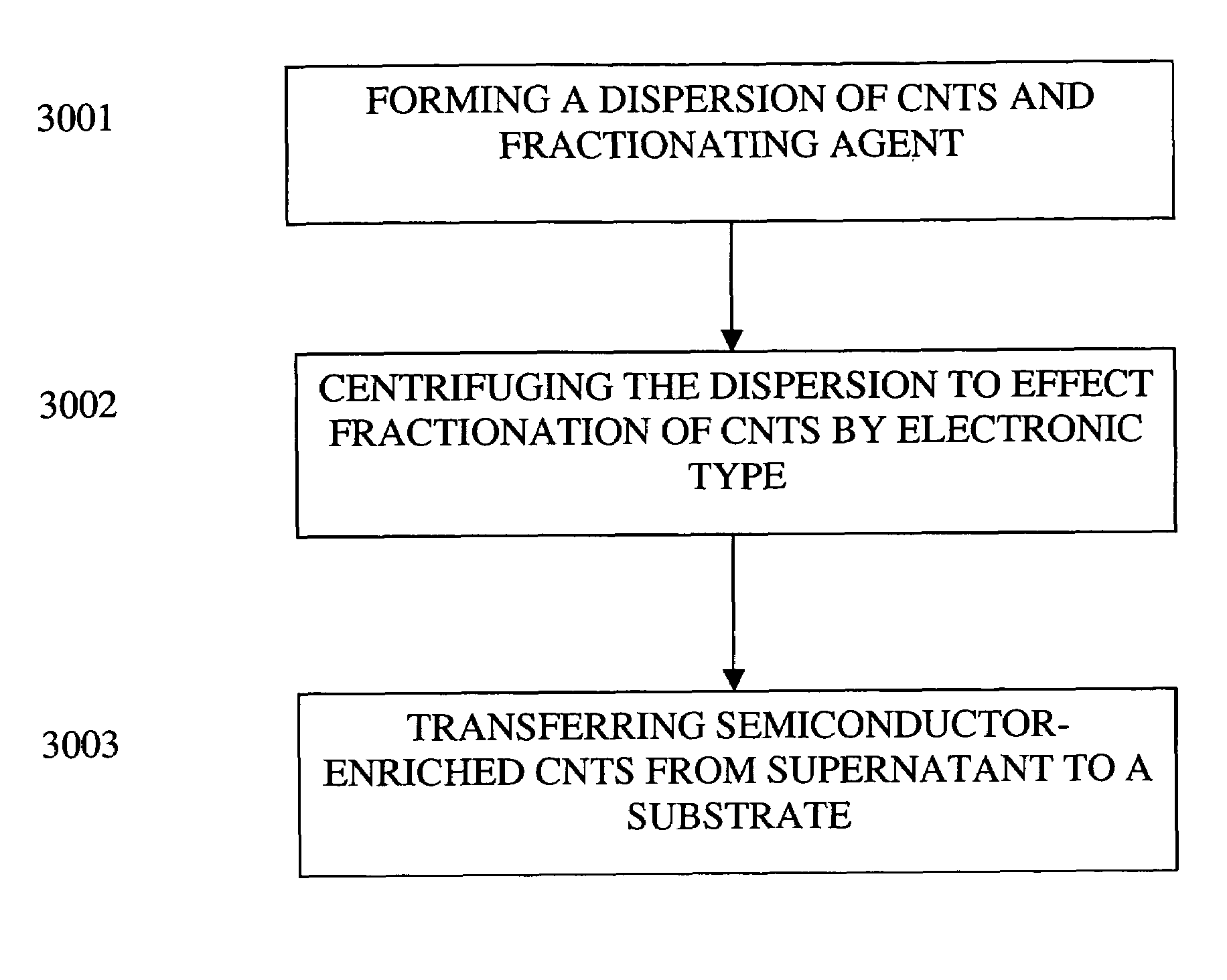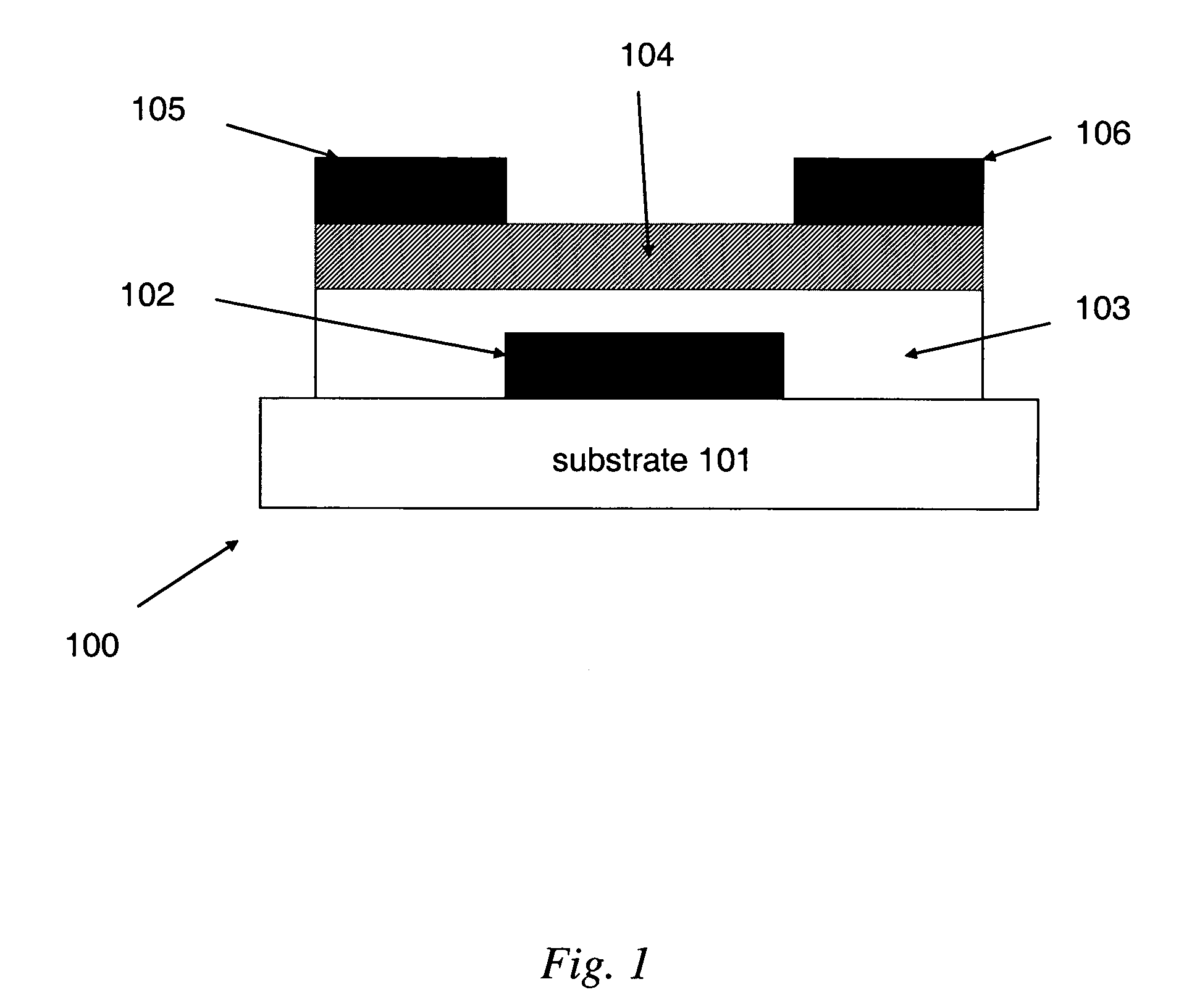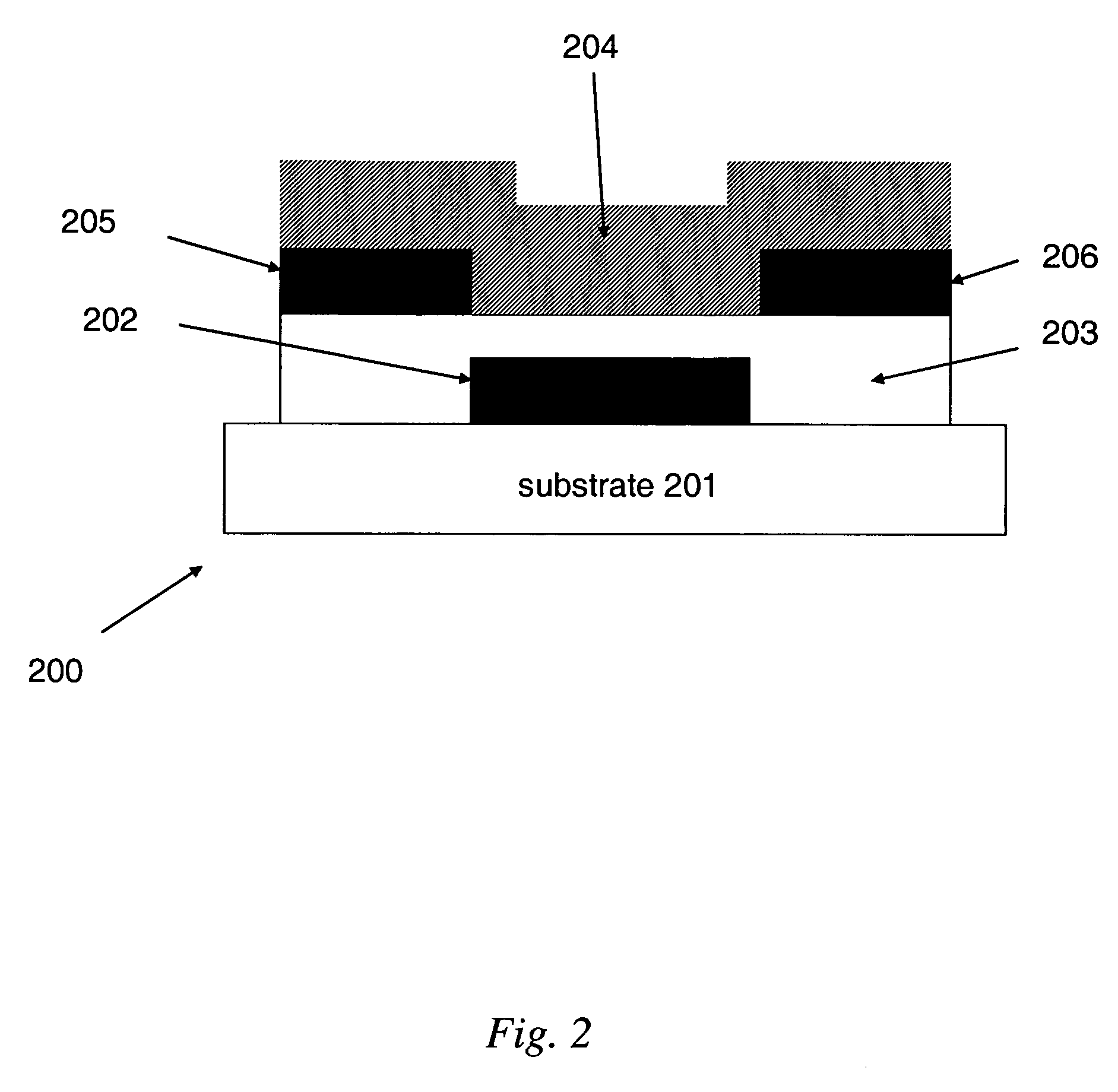High performance field effect transistors comprising carbon nanotubes fabricated using solution based processing
a technology of carbon nanotubes and transistors, which is applied in the field of field effect transistors, can solve the problems of difficult production, limited application of organic-based devices, and inability to reproduce, and achieve the effects of facilitating dispersion, facilitating dispersion, and facilitating dispersion
- Summary
- Abstract
- Description
- Claims
- Application Information
AI Technical Summary
Benefits of technology
Problems solved by technology
Method used
Image
Examples
example 1
[0085]This Example serves to illustrate how CNTs can be selectively fractionated, according to some embodiments of the present invention, by type to yield CNT populations enriched in semiconducting CNTs.
[0086]CNTs used in this Example were HiPco-produced SWNTs of purified grade obtained from Carbon Nanotechnologies, Inc. (Houston, Tex.). Such purified tubes comprised metal impurities (predominantly Fe catalyst) in a range of 2-20 weight percent. These SWNTs typically have diameters in the range of 0.7-1.3 nm, lengths in the range of 1-1.5 microns, and an average electronic bandgap of around 0.8 eV.
[0087]Referring to FIG. 4, such fractionation typically requires three steps: (Step 4001) solubilization, (Step 4002) centrifugation, and (Step 4003) filtration. These steps are described in more detail below.
[0088](Step 4001) Solubilization: In vial 1, 0.1-1 mg / ml of purified SWNTs were partially dispersed in a solvent, most typically CHCl3, by sonicating the vial in a water bath for 5-30...
example 2
[0091]This Example serves to illustrate how Raman spectroscopy can be used to confirm fractionation of CNTs.
[0092]Evidence for the selective solubilization of semi-conducting SWNTs was obtained from Raman studies using a 514 nm laser light source, as shown in FIG. 5. The relative intensities of the bands in spectrum C (“centrifuge ppte,” i.e., post-centrifuge sediment, in FIG. 5) are significantly different from the intensities in the other three spectra shown in FIG. 5. This comparison suggests that P3HT partially separates SWNTs into semiconducting (sc)-enriched (supernatant) and metallic (met)-enriched (sediment) portions. Analysis of the Raman data was done in accordance with previous analyses (H. Katahura et al., “Optical Properties of Single-Wall Carbon Nanotubes,” Synthetic Metals, 1999, 103, 2555-2558; M. Dresselhaus et al., “Phonons in Carbon Nanotubes,” Advances in Physics, 2000, 49,705-814).
[0093]While not intending to be bound by theory, Table 1 is a summary and interpre...
example 3
[0097]This Example serves to illustrate a manner in which UV / vis / NIR spectroscopy can be used to confirm fractionation of CNTs.
[0098]In one particular embodiment, carbon nanotubes are dispersed by attaching at least one conjugated soluble polymer such as a polythiophene, polythiophene derivatives, a polyfluorene, or combinations thereof to the nanotube. In a particular embodiment, the conjugated soluble polymer is P3HT. While not intending to be bound by theory, the enhanced solubilization of some SWNTs by non-covalently attaching P3HT to SWNTs is shown by the UV / vis / NIR absorption spectra in FIG. 8. The UV / vis / NIR absorption spectra in FIG. 8 shows that P3HT has an affinity for the SWNTs, as evidenced by the 550-650 nm range (circled area FIG. 8). For comparative purposes, an UV / vis / NIR absorption spectrum of untreated SWNTs is shown in FIG. 9
PUM
| Property | Measurement | Unit |
|---|---|---|
| diameters | aaaaa | aaaaa |
| size | aaaaa | aaaaa |
| size | aaaaa | aaaaa |
Abstract
Description
Claims
Application Information
 Login to View More
Login to View More - R&D
- Intellectual Property
- Life Sciences
- Materials
- Tech Scout
- Unparalleled Data Quality
- Higher Quality Content
- 60% Fewer Hallucinations
Browse by: Latest US Patents, China's latest patents, Technical Efficacy Thesaurus, Application Domain, Technology Topic, Popular Technical Reports.
© 2025 PatSnap. All rights reserved.Legal|Privacy policy|Modern Slavery Act Transparency Statement|Sitemap|About US| Contact US: help@patsnap.com



